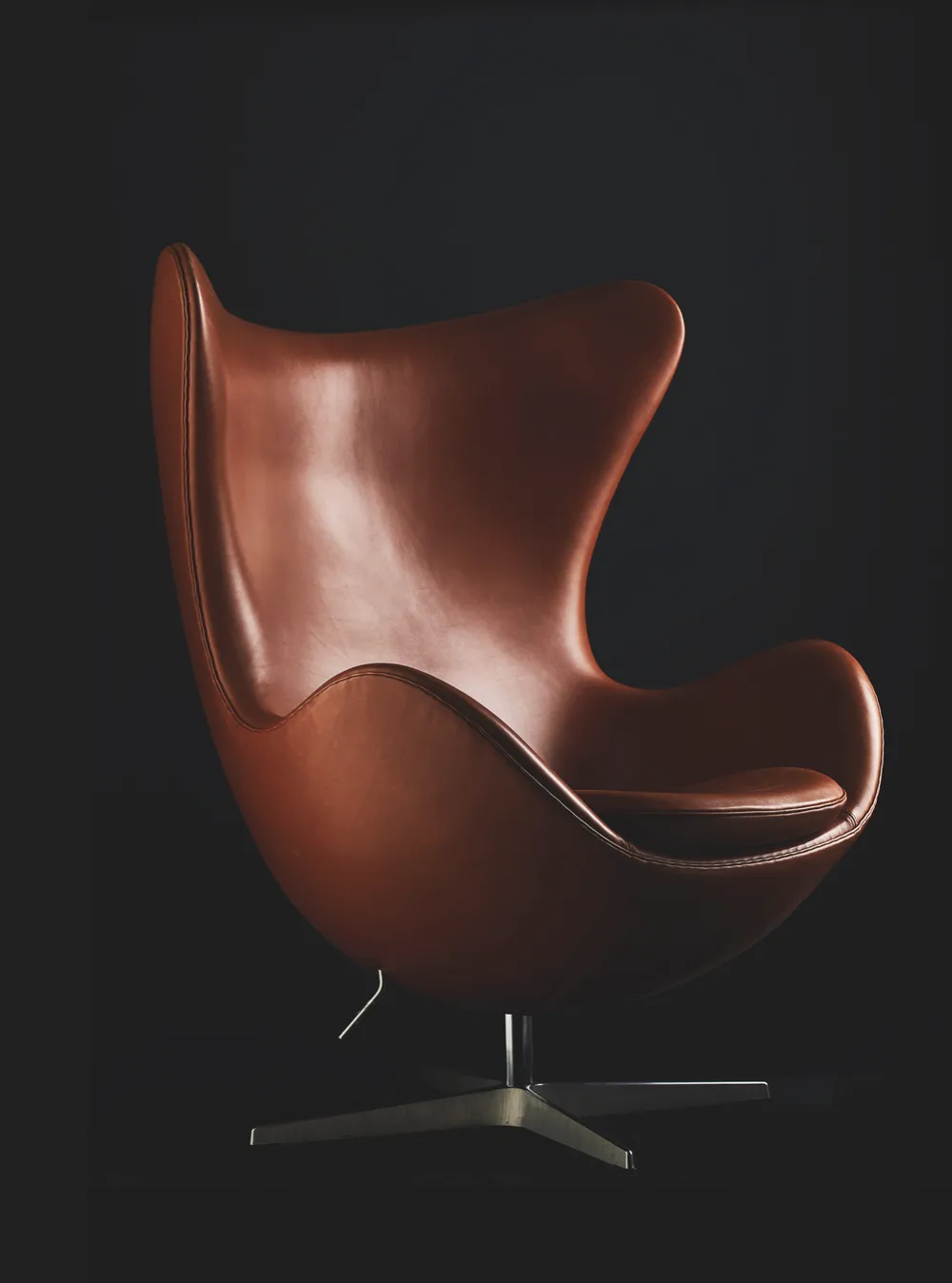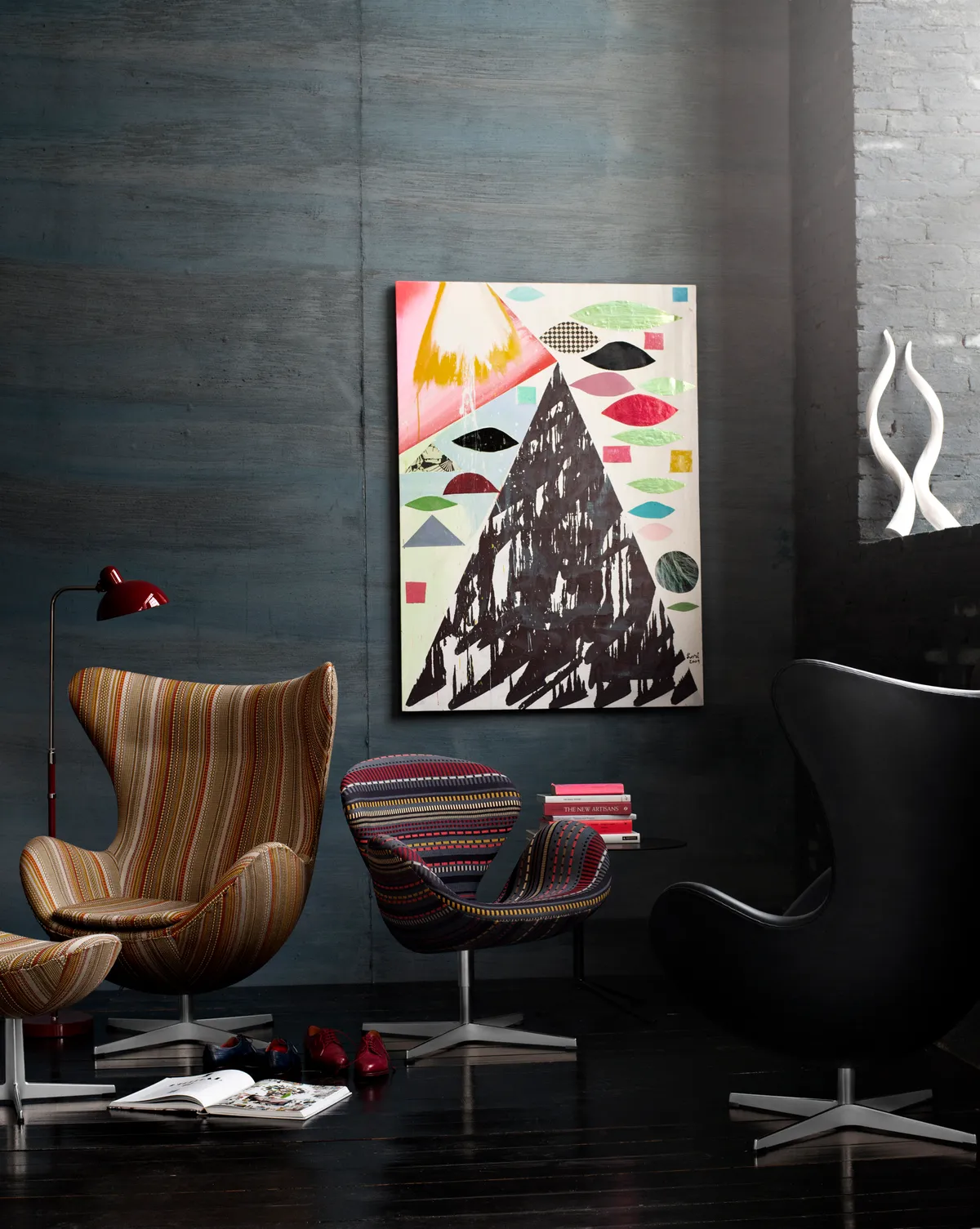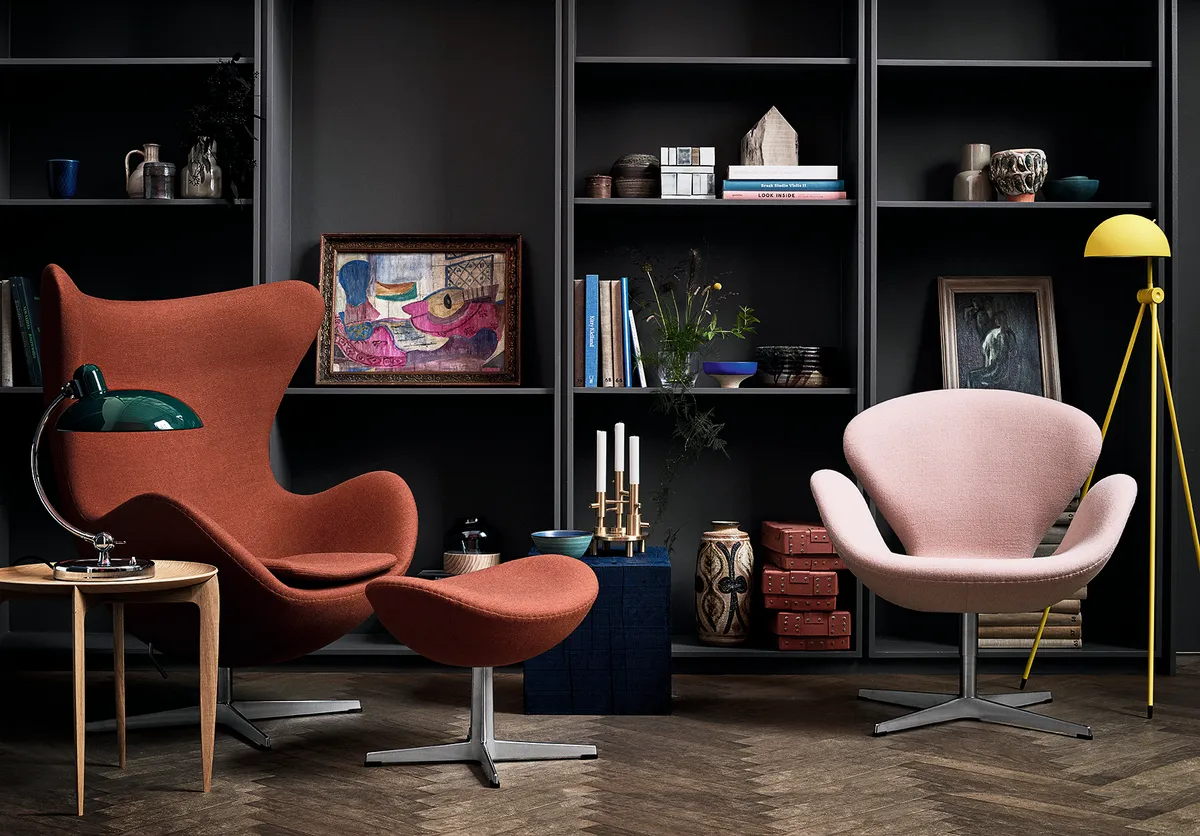Designed in the Fifties, the Egg chair was a showstopper that defined its era. It cemented its creator's reputation as one of the great designers of his age. 60 years on, Arne Jacobsen's iconic design remains as popular as ever. Recently released in a limited edition natural leather finish, it is perfectly suited to a contemporary aesthetic…
A DESIGN ICON OF ITS TIME
The Egg chair was designed in 1958 by Danish architect and designer Arne Jacobsen and produced by Danish furniture company Fritz Hansen, which still manufactures it today.
It was originally conceived to furnish the foyer of the SAS Royal Hotel in Copenhagen – Denmark’s first skyscraper – which Jacobsen worked on between 1956 and 1960. The hotel was Jacobsen’s opus – a project for which he designed everything, from the outside in, including the lighting, door handles and even the cutlery in the restaurant.
While the building was a hard-edged, rectangularedifice, the Egg chair was a curving organic form, designed to provide comfort and an element of privacy for the sitter in the otherwise public space of the hotel’s lobby.
Jacobsen used newly developed moulded foam to produce the seat’s inner shell, which he first sculpted in clay at his home. The unique shape, on its star-like swivel base, was era-defining and earned the chair the status of design icon.

Behind the Brand:Arne Jacobsen
Arne Jacobsen (1902-1971) is one of the best-known designers of the 20th century and one of the pioneers of modern Danish design. Born in Copenhagen in 1902, he studied architecture at the Royal Danish Academy of Fine Arts and, from the 1930s, was a trailblazing architect, creating landmark Functionalist buildings such as Aarhus City Hall and St Catherine’s College, Oxford.
He is most famous for his chairs, which championed functionality and new materials. Despite a minimalist Scandinavian aesthetic, they were often inspired by nature. His first major success was the Ant in 1952, followed by the Series 7 in 1955. The Egg, the Swan and the Drop all followed in 1958, created for Copenhagen’s SAS Royal Hotel.
4 Ways to Style the Egg Chair
1
Retro Vibe

In 2012, Fritz Hansen collaborated with respected British designer Paul Smith to produce the Egg and other chairs in Paul Smith fabrics. Take a step back to the 1970s with this example, upholstered in nostalgic brown and orange stripes.
2
Colour Palette Update

With its luxuriously soft natural leather upholstery and gold-platedstand, the 60th-anniversary edition of the chair couldn’t be more on trend. Pair with a leather and linen pouffe, and matt heather walls for a modern update to the design classic.
3
Cosy Vintage

A vintage-style backdrop complements the Egg’s mid-century shape perfectly. Position the chair in front of bookshelves for a cosseting, library feel. A dark background, with subtle splashes of colour, gives your Egg a contemporary edge.
4
A Calm Corner

Sporting a cocooning shape and winged back, the Egg was conceived as a place of refuge for its occupant. Make the most of this feature by pairing with a footstool to create a private reading nook.
Buying Advice: What to look out for...
- A design icon is a desirable and expensive object. Buying a new chair upholstered in fabric will cost between £5,000 and £6,000, while the new leather limited edition is £11,137.
- Buying an Egg secondhand will not necessarily be cheaper. But, if you are prepared to buy a more worn chair that could be reupholstered, you will get a better price. Be aware though that this is a much copied and conterfeited item, so do your research.
- All Eggs made after 2006 feature a ‘Republic of Fritz Hansen’ label in the upholstery. Older chairsshould have a ‘Made in Denmark by Fritz Hansen’ label on the base, plus a date or serial number. If this is missing, look on the bottom of the base for a raised serial number and ‘Fritz Hansen’ in the metal.
- Authentic upholstery has a slight wave pattern to the stitching and leather chairs are made from two pieces of hide. The base is always a fourpronged star made of aluminium.
- Always buy from a respected dealer and be extra careful when buying online. If you do come across a fake, you can let Fritz Hansen know by emailing counterfeit@fritzhansen.com.